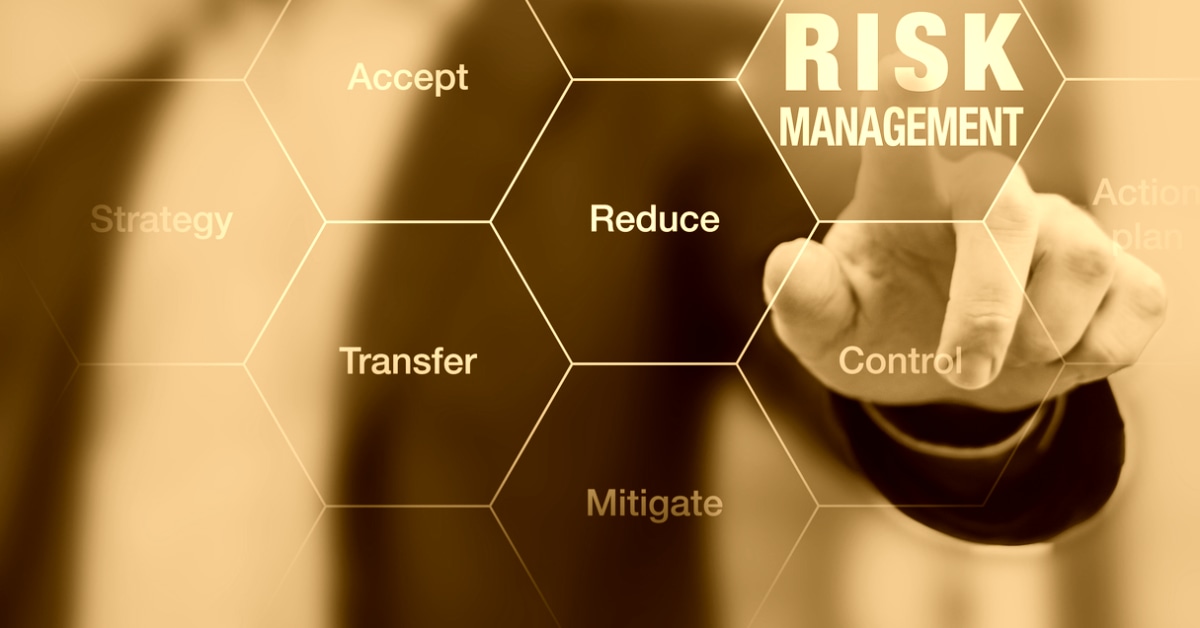Risk Management Strategies in Advisory Consulting
 by Anita Oakes
by Anita Oakes

Now that you’ve listed the various threats and vulnerabilities your company or organization could face, it’s time to prioritize your response to each risk based on the potential impact. We work with you to develop risk management strategies that help build resilience and growth. We work with you to develop risk management strategies that help make stability and growth. These are precisely the scenarios that risk management consultants deal with when working with clients.
We work with you to develop risk management strategies that help build resilience and growth. Austin is an experienced commercial risk consultant specializing in property damage risk management for religious institutions, real estate, construction, and manufacturing. SH Group’s risk management services provide companies with practical and actionable risk, governance, and control recommendations. When a company works with a risk management consulting firm, it can receive ongoing support and feedback on infrastructure and performance.
When a company works with a risk management consulting firm, it can receive ongoing support and feedback on infrastructure and performance. Leading companies know that disruption is not just the responsibility of a start-up. While most companies focus on risk management to manage new and emerging risks, others take a more proactive approach to identifying risk opportunities. Ensure you assess whether your risk management plans keep pace with unknown risks in your industry and the economy.
Every company can use disruption to create new opportunities and stand out. A risk management consultant can help you prepare your business for the damage that a single adverse event could cause. A risk management consultant can help you prepare your business for the damage that a single adverse event could cause. A risk management consultant offers organizations the perspective of a third party and looks at the organization from a neutral position.
Not all risks are the same; the risk of petty theft is significantly lower than the risk of a lawsuit for construction liability. Companies of all sizes and industries can benefit from hiring a risk management consultant to help them with common threats, such as data breaches and cyber attacks. A risk management consultant offers business customers many services, such as. B. Cyber risk assessments, corporate governance, risk and compliance, incident response planning, and IT due diligence reviews. Once you know your business risk and which threats could significantly impact you, you can create a plan to protect your organization.
Here are some of the critical benefits of risk management consulting.
Integrating Compliance into Proactive Risk Management Strategies
These examples were compiled programmatically from various online sources to illustrate the current usage of “compliance.”. They must ensure the interplay or resilience of a material, that it is elastically deformed under the action of force or (of a gas) changes its volume. Strategies to enforce compliance with air quality standards: All construction work must comply with safety regulations—American definition and synonyms of compliance from the online English dictionary from Macmillan Education.
Financial risk
Before the analyst spends time looking for techniques to assess and mitigate risks, it is important that the analyst knows what financial risk is and what its practical implications are. The more common and pronounced financial risks include credit risk, liquidity risk, and operational risk. Understanding, measuring, and mitigating financial risks are critical to a company’s long-term success. This is why the Financial Risk Manager FRM exam has received wide recognition among financial professionals worldwide.
They also provide axioms for model risk measures and define several practical examples of layered model risk measures in the context of financial risk management and pricing of contingent assets. While this isn’t a positive trait, understanding the possibility of financial risk can lead to better and more informed business or investment decisions. It is often assumed that it only includes downside risk, i.e., the potential for financial losses and uncertainty about its extent. The most common financial risks include credit, operating, foreign investment, legal, equity, and liquidity risks.
The various forms of financial risk impact companies, individuals, economies, and markets in multiple ways. You can even take on some welcome financial risks as they generate new opportunities and growth. In the event of financial risk, there is a chance that a company’s cash flow may prove insufficient to meet its obligations. Assessing the financial risk associated with a security or asset helps determine or set the value of that investment.
Individuals face financial risks when they make decisions that may jeopardize their income or ability to pay off a debt they have assumed. You can avoid financial risks by using analytical tools and calculations that help determine the risk associated with specific measures or investments. Financial risk is one of the various types of risks related to financing, including financial transactions where there is the risk of default on corporate loans. When individuals run businesses, they face financial risk when they make decisions that jeopardize their ability to pay debts or income.
Financial risk analysis is the process of studying the risks associated with a specific business decision.. This financing requirement represents a financial risk for the company and all investors or stakeholders invested in the company. Financial risk is the potential to lose money on an investment or have a negative business result.
Risk Assessment
The most popular online Visio alternative, Lucidchart, is used by millions of users in over 180 countries, from sales managers who map target organizations to IT directors who visualize their network infrastructure. The risk assessment results should be recorded by the company and submitted as easily accessible official documents. We have the resources and expert advice to improve your risk assessment, prevent hazards, protect employees, and protect equipment. As a final step in risk assessment, risk assessment asks safety professionals to review the risk analysis results and compare them with established risk criteria to determine where additional controls may be required and what those controls could be..
They could be helpful for companies developing their initial risk assessments or updating older assessments. Risk assessment is the identification of risks that can have a negative impact on a company’s ability to do business. Before you begin the risk management process, you should determine the scope of the assessment, the resources required, the stakeholders involved, and the laws and regulations you must follow. The risk assessment team can use tools such as risk assessment matrices and heat maps to compare and therefore prioritize threats.
To help you create your risk assessment plan, you can visualize and document processes with Lucidchart. Once you’ve collected the data and set the scope for a risk assessment project, the process moves on to carrying out the risk assessment. A business impact analysis (BIA) is the process of determining the potential impact of disrupting time-critical or critical business processes. In large companies, the risk assessment process is usually carried out by the Chief Risk Officer (CRO) or a Chief Risk Manager.
A fourth element, which is just as crucial for effective risk management, runs through all steps of the risk assessment process — risk communication. Safety professionals must remember to communicate the risks identified, analyzed, and assessed during the assessment to all stakeholders so that everyone fully understands the risks that exist and knows how best to prevent or mitigate them to achieve corporate objectives. Risk assessment serves many purposes for an organization, including reducing operational risks, improving safety performance, and achieving goals. A risk assessment is a process for identifying potential hazards and analyzing what could happen if a hazard occurs.
The first step in a risk assessment is to identify potential hazards that, if they occurred, would adversely affect the company’s ability to do business. These assessments help identify these inherent business risks and provide measures, processes, and controls to reduce the impact of these risks on business operations. Noun: a systematic approach for evaluating the potential risks associated with a planned activity or business. Possible hazards that could be considered or identified in the risk assessment include natural disasters, power outages, cyber-attacks, and power outages.
Risk Mitigation
A documented risk mitigation plan ensures you know exactly what to do before and during an emergency to avoid, control, transfer, and reduce that risk. Risk mitigation planning defines what should be done to reduce a risk, when it should be done, who does it, and what funding is required to put the risk mitigation plan into action.. Identifying recurring risks, prioritizing mitigation, and monitoring the established plan are important aspects of maintaining a thorough mitigation strategy. Risk mitigation planning is the process of identifying, evaluating, and selecting actions to take to reduce risk to a level that management deems acceptable.
Risk mitigation is the process that a company undertakes to reduce its risk against the various risks it could face. However, a risk mitigation plan can help a company prepare for the worst by acknowledging that a certain level of damage will occur and having systems to address it. Threats that could put a company at risk include cyber-attacks, weather events, and other causes of physical or virtual damage. We’ve given workplace fires as an example, but your company may need to mitigate many more risks, including natural disasters, system failures, illness outbreaks, and workplace violence.
Various BC and disaster recovery (DR) providers are focused on mitigating risks, and even smaller companies can use DRAS-a-Service (DRaaS) providers to keep costs relatively low. Risk mitigation is reducing the impact of potential risks by developing a plan to manage, avoid, or limit setbacks as much as possible. Put, risk mitigation is the practice of reducing the impact of an event, while risk prevention focuses on avoiding those events altogether. Like risk mitigation, risk mitigation involves taking steps to reduce the adverse effects of threats and disasters on business continuity (BC).
With a good risk mitigation plan, however, you can prevent a crisis event from having a massive impact on your business by getting as close as possible to an emergency before it starts. External specialists have a good understanding of internal needs and resources and can be a valuable part of a risk mitigation plan. With this risk mitigation approach, as soon as you complete your risk analysis, you will take steps to reduce the chance of a risk occurring or the impact if it happens. More broadly, you could say that risk mitigation is one of the steps of risk management, which includes identifying and analyzing risks.
But identifying risks early on is the best chance of reducing them to a level your organization can manage.
References:
- https://hartmanadvisors.com/benefits-of-risk-management-consulting-services/
- Risk Consulting | Insurance Broking & Risk Management | Marsh
Suggested Reading:
Types of Financial Advisory Services
What You Need to Know About Chief Marketing Officer 101
Related Posts
Now that you’ve listed the various threats and vulnerabilities your company or organization could face, it’s time to prioritize your response to each risk based on the potential impact. We work with you to develop risk management strategies that help build resilience and growth. We work with you to develop risk management strategies that help…